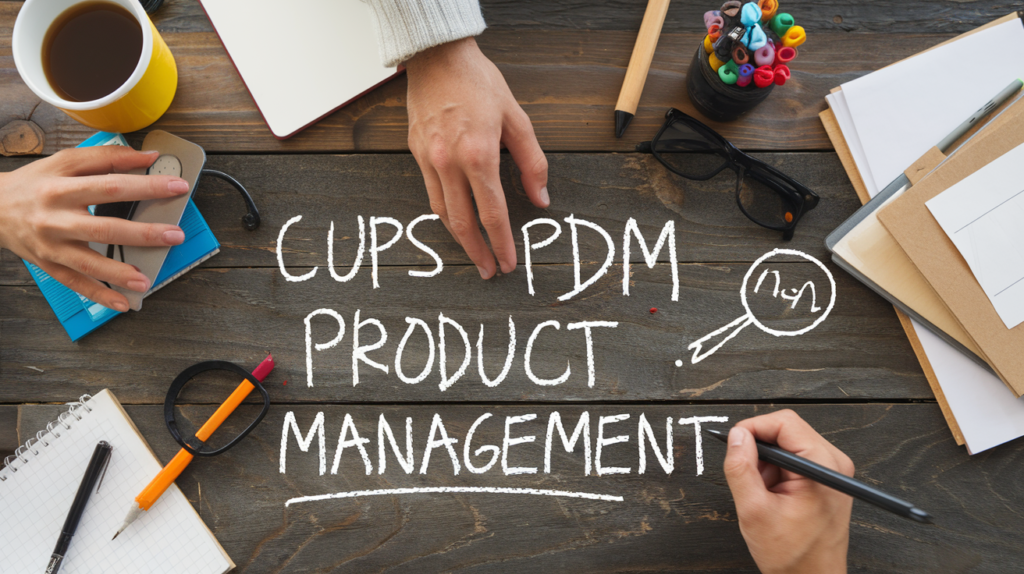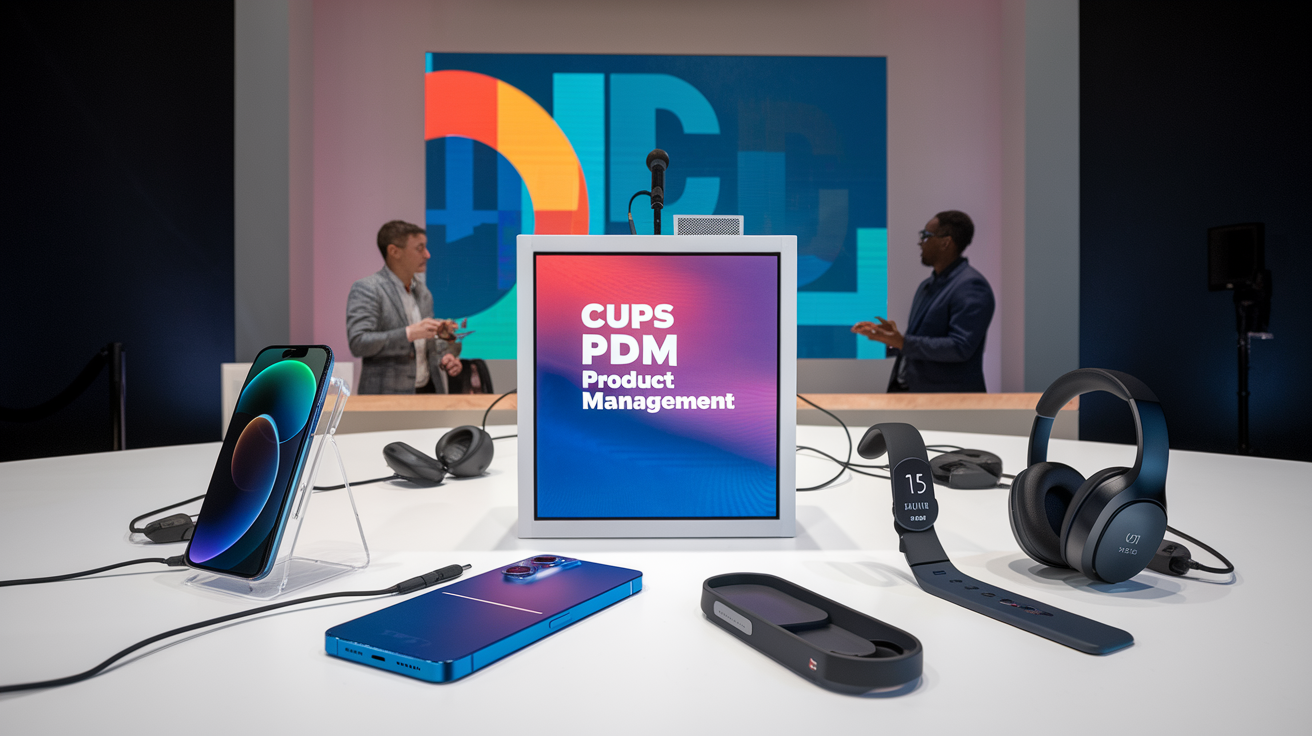Introduction
The ability to innovate and excel in product design is paramount in today’s competitive landscape. Companies and professionals constantly seek methodologies that streamline processes while delivering exceptional results. Enter the CUPS PDM Product Management framework—a revolutionary approach tailored to redefine product design interviews and overall management practices. This seven-step methodology is a beacon for those aspiring to create impactful, user-centric products. Let’s delve deep into the nuances of this groundbreaking framework.
What is CUPS PDM Product Management?
“CUPS PDM Product Management” is an acronym representing a structured process to excel in product design interviews and execution. It comprises seven core steps:
- Clarify the Problem
- Understand the User
- Prioritize Needs
- Solution Ideation
- Prototype Development
- Deliver the Solution
- Measure the Impact
This framework simplifies complex product design challenges and ensures a meticulous, user-focused approach, making it a favorite among seasoned professionals and budding product managers alike.
Breaking Down the Seven Steps of CUPS PDM Product Management
1. Clarify the Problem
The cornerstone of “CUPS PDM Product Management” is precisely identifying and defining the problem. This step requires asking probing questions, engaging with stakeholders, and ensuring that the problem statement is devoid of ambiguity. Clear problem definitions pave the way for targeted solutions, reducing wasted effort and increasing efficiency.
2. Understand the User
Understanding the user is pivotal. This step emphasizes empathy, encouraging product managers to delve deep into user personas, behaviors, pain points, and aspirations. The “CUPS PDM Product Management” framework ensures that solutions are tailored to real user needs by leveraging techniques such as user interviews, surveys, and data analysis.
3. Prioritize Needs
Every user has diverse requirements, but not all hold the same weight. Prioritization is essential. Using frameworks like the Kano model or RICE scoring, the “CUPS PDM Product Management” method empowers teams to identify high-impact needs that align with organizational goals.
4. Solution Ideation
Once needs are prioritized, ideation takes center stage: brainstorming sessions, design sprints, and collaborative workshops fuel creativity. The “CUPS PDM Product Management” process here emphasizes divergent thinking to generate many ideas, followed by convergent thinking to select the most feasible and impactful solutions.
5. Prototype Development
Prototyping bridges the gap between ideation and execution. Creating low-fidelity or high-fidelity prototypes enables teams to visualize solutions, gather early feedback, and iterate rapidly. This step in “CUPS PDM Product Management” minimizes risks associated with full-scale development.
6. Deliver the Solution
The result of careful preparation and execution is delivery. Whether launching a digital product or introducing a tangible item, the “CUPS PDM Product Management” framework ensures delivery aligns with quality standards, user expectations, and timelines.
7. Measure the Impact
The journey doesn’t end at delivery. Measuring impact is crucial to validate success and identify areas for improvement. Using metrics like user satisfaction, adoption rates, and ROI, “CUPS PDM Product Management” reinforces a culture of continuous learning and growth.
Why It Matters
In an era where innovation is non-negotiable, adopting structured methodologies like “CUPS PDM Product Management” offers unparalleled advantages:
- Enhanced Efficiency: Streamlined processes reduce redundancies.
- User-Centric Solutions: Deep user insights drive meaningful outcomes.
- Risk Mitigation: Prototyping and feedback loops prevent costly errors.
- Scalability: The framework adapts to projects of varying complexities.

Practical Applications
Case Study 1: Revolutionizing E-Commerce
A leading e-commerce platform used it to redesign its checkout process. The team prioritized speed and simplicity by clarifying pain points and understanding user behavior. The result? A Within three months, conversion rates increased by 25%.
Case Study 2: Enhancing Healthcare Solutions
A healthcare startup leveraged it to develop a telemedicine app. By focusing on user needs such as accessibility and security, the app achieved widespread adoption and garnered industry accolades.
Case Study 3: Transforming Educational Platforms
An EdTech company adopted it to revamp its learning management system. By prioritizing intuitive navigation and personalization, they enhanced user engagement and retention rates by 40%. This highlights the versatility of the framework in diverse domains.
Tips for Mastering “CUPS PDM Product Management”
- Adopt a growth mindset: It’s critical to keep learning and adapting.
- Promote Collaboration: To accommodate different viewpoints, promote cross-functional teamwork.
- Leverage Technology: Utilize tools like Miro, Figma, and Jira to streamline processes.
- Seek Feedback: Regularly engage users and stakeholders for insights.
- Stay Agile: Be prepared to pivot based on feedback and market trends.
- Document Progress: Maintain thorough records of each step to track decisions and outcomes effectively.
- Invest in Training: Empower your team with workshops or courses on the “CUPS PDM Product Management” framework.
Conclusion
“CUPS PDM Product Management” is more than just a framework; it’s a mindset that champions clarity, empathy, and innovation. By embedding this methodology into your processes, you’ll excel in product design interviews and drive meaningful, impactful outcomes in your projects. Embrace “CUPS PDM Product Management” today and witness a transformative shift in how you approach product management. From redefining user experiences to achieving organizational goals, the potential of this framework is limitless. Its adaptability and focus on user needs make it an invaluable tool for tackling challenges in an ever-evolving market, ensuring long-term success and growth for any organization.
FAQs
1. What is “CUPS PDM Product Management” mostly used for?
To provide a structured and user-centric approach to product design and management.
2. Who can benefit from it?
Product managers, UX designers, and anyone involved in product development.
3. How does it enhance efficiency?
By breaking down complex tasks into manageable steps and prioritizing user needs.
4. Can it be applied to non-technical fields?
Its principles are universal and adaptable across industries.
5. What tools complement it?
Tools like Figma for prototyping, Jira for project management, and Miro for brainstorming.
6. How do I measure success in it?
Through metrics like user satisfaction, adoption rates, and return on investment (ROI).
